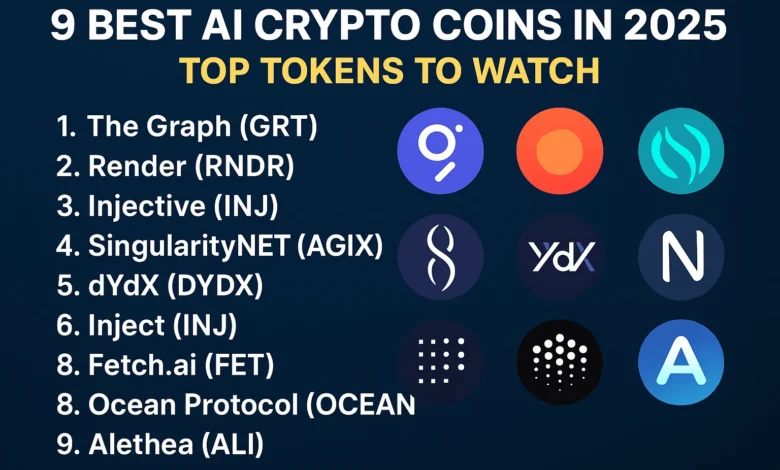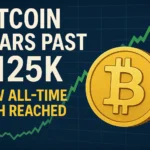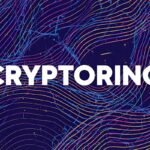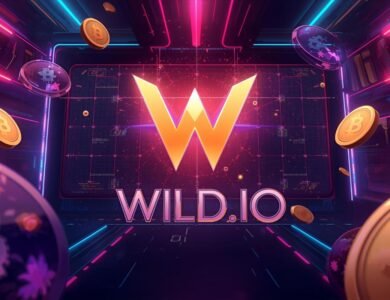
Artificial intelligence is colliding with crypto in a big way. From decentralized compute networks to autonomous agents and on-chain data, AI crypto coins are powering real use cases instead of just hype. In 2025, investors aren’t only asking which tokens could pump—they’re asking which projects actually do something: serve AI models, index the world’s data, or unlock GPU power at scale. This guide breaks down the 9 best AI crypto coins in 2025, what each project is building, and how they fit together. You’ll learn where decentralized AI, DePIN compute, AI oracles, and on-chain intelligence are heading—so you can research smarter and spot narratives early.
Before we dive in, a quick note: nothing here is financial advice. AI + crypto is fast-moving. Always do your own research, understand smart-contract and market risks, and size positions responsibly.
How We Picked the Best AI Crypto Coins
To keep this list useful (and not just a popularity contest), each coin meets at least one of these criteria:
-
It provides real utility for AI workloads, data, or analytics.
-
It is shipping mainnet features or has visible, public traction.
-
It occupies a distinct category within the AI x crypto stack.
That means you’ll see a mix of decentralized compute, AI data infrastructure, agent frameworks, and analytics networks—a full stack rather than nine look-alikes.
1) ASI (Artificial Superintelligence Alliance)
Why ASI is a 2025 essential
In mid-2024, three of the biggest AI-crypto names—Fetch.ai, SingularityNET, and Ocean Protocol—kicked off a unifying token plan under the Artificial Superintelligence Alliance. The goal: consolidate liquidity and developer energy under a single ASI token, aligning autonomous agents (Fetch.ai), decentralized AI services (SingularityNET), and data markets (Ocean) into one coordinated ecosystem. It’s rare to see a merger of this scale in crypto, and 2025 is the first full year where the alliance’s roadmap can compound.
Where it fits in the stack
Think of ASI as a multi-capability AI layer: agents that can reason and act, marketplaces for AI services, and tokenized data pipelines. If it succeeds, ASI could become one of the most comprehensive AI crypto ecosystems, with clear network effects between data, models, and agents.
2) Bittensor (TAO)
Why TAO matters for decentralized AI
Bittensor is a protocol for decentralized machine learning. Instead of one company training a model and renting it to you, Bittensor builds an open marketplace of model “subnets” where useful intelligence is rewarded in TAO. Miners contribute training or inference; users consume results. The economic flywheel is simple: models that add more value earn more. In 2025, that model-as-a-network approach is increasingly relevant as AI workloads explode.
Where it fits in the stack
Bittensor is a model layer—a way to cultivate, rank, and pay for machine intelligence without centralized gatekeepers. If you believe open, incentive-aligned AI wins long term, TAO is a project to study closely.
3) Render (RNDR)
Why RNDR is bigger than “rendering”
Render Network harnesses idle GPUs worldwide to deliver graphics and AI computation on demand. While it rose to fame for CGI rendering, the same decentralized GPU grid is increasingly useful for AI inference and heavy compute jobs. Creators post tasks, node operators complete them, and payments clear in RNDR via escrow. That job marketplace dynamic scales as model sizes and media workloads surge in 2025.
Where it fits in the stack
Render is a DePIN compute backbone. As more teams need fast, flexible GPU power without locking into big-cloud pricing, RNDR’s distributed marketplace becomes a real alternative.
4) Akash Network (AKT)
Why AKT keeps showing up in AI conversations
Akash is an open decentralized compute marketplace purpose-built for AI and data workloads. It publishes transparent GPU pricing, supports modern inference and generative AI stacks, and lets providers monetize hardware while users deploy workloads across a decentralized grid. In 2025, the question isn’t whether decentralized compute is needed—it’s whether it’s reliable and cost-effective at scale. Akash is one of the few networks trying to prove that at production levels.
Where it fits in the stack
Akash is the infrastructure layer for AI apps that want elasticity without centralized lock-in. If decentralized GPU utilization keeps climbing, AKT’s role in AI infrastructure strengthens.
5) The Graph (GRT)
Why data indexing powers AI agents
AI doesn’t work in a vacuum; it needs structured, queryable data. The Graph is the de facto standard for indexing and querying blockchain data through “subgraphs.” In 2025, as AI agents touch DeFi, identity, and payments, they need fast, reliable reads across many chains. GRT’s network serves exactly that, with support across dozens of ecosystems and ongoing cross-chain upgrades.
Where it fits in the stack
The Graph is the data retrieval layer for Web3 and AI agents—less flashy than GPU tokens, but crucial. If autonomous agents are the future, they’ll need indexed, up-to-date on-chain context that GRT already specializes in.
6) Arkham (ARKM)
Why on-chain intelligence is an AI use case
Arkham applies AI to blockchain analytics, linking addresses to entities and generating AI-assisted transaction insights. It also runs an Intel Exchange, a marketplace for crypto intelligence that uses ARKM for incentives. In February 2025 Arkham introduced an AI Analyzer that summarizes complex on-chain flows—exactly the sort of “explainability” tooling the industry needs at scale.
Where it fits in the stack
Arkham is an analytics + intelligence layer. As AI agents automate compliance checks, counter-party screening, and risk monitoring, entity-level attribution and explainable summaries are differentiators—and ARKM is built around that workflow.
7) Golem (GLM)
Why GLM still earns a spot
Launched years ago, Golem remains one of crypto’s longest-running visions for decentralized compute. In 2025, it’s repositioned around AI and scientific workloads with a peer-to-peer marketplace for CPU/GPU cycles. Developers rent compute; providers monetize unused capacity; payments flow in GLM. For builders who like primitives that do one job well, Golem’s simplicity is a strength.
Where it fits in the stack
Golem is a general compute fabric that can back AI tasks from model training experiments to batch inference. In a world of rising demand, multiple compute markets can thrive side by side.
8) Oraichain (ORAI)
Why AI oracles are a missing piece
Smart contracts can’t call AI models directly. Oraichain bridges that gap by acting as an AI-powered oracle and marketplace, connecting on-chain logic to curated AI APIs via oracle scripts, test cases, and fee models. For devs who need verifiable AI outputs inside contracts or dApps, ORAI’s design addresses trust, traceability, and repeatability.
Where it fits in the stack
Oraichain is the integration layer between blockchains and off-chain AI services—crucial for AI-assisted dApps, scoring systems, and prediction markets that need model results on-chain.
9) AIOZ Network (AIOZ)
Why AIOZ is an under-the-radar AI DePIN play
AIOZ started with decentralized streaming and storage, then expanded into AIOZ AI, a marketplace and compute network powered by its DePIN of global nodes. In 2025, that multi-service stack—storage, streaming, and AI compute—positions AIOZ as an edge-friendly platform for media-heavy AI apps. Announcements this year highlight an expanding node network and a marketplace for AI assets and processing.
Where it fits in the stack
AIOZ is a full-stack media + AI network: store data, transform it, stream it, and run inference on a distributed fabric. If AI video and generative media keep booming, AIOZ’s design is well aligned.
How These 9 AI Crypto Coins Fit Together
A layered mental model
If you map the AI x crypto landscape as a stack, a coherent picture emerges:
-
Compute fabrics: Render (RNDR), Akash (AKT), and Golem (GLM) provide the GPU/CPU horsepower that AI needs, with marketplace dynamics to match workloads and capacity.
-
Model + agent networks: Bittensor (TAO) and the ASI ecosystem focus on model quality, incentives, and autonomous agents.
-
Data + integration: The Graph (GRT) and Oraichain (ORAI) solve data access and AI oracle needs so agents and contracts can act on reliable, structured inputs.
-
Intelligence & analytics: Arkham (ARKM) layers AI-assisted analysis and attribution on top of raw data, enabling risk, compliance, and investigative use cases.
Why decentralization helps AI crypto coins
Centralized AI stacks are fast, but brittle: single points of failure, opaque policies, and pricing power concentrated in a few clouds. Decentralized AI networks distribute compute, data, and intelligence while aligning incentives with tokens. The result is a modular ecosystem where you can choose the best-in-class layer for your use case—and where networks compete on cost, performance, and openness.
Research Tips for 2025 (So You Don’t Just “Buy the Narrative”)
Track real usage, not just price
For compute tokens (RNDR, AKT, GLM), follow GPU/CPU utilization, job counts, and provider geography. For data and analytics (GRT, ARKM), monitor network queries, entity coverage, and feature rollouts like AI summaries and cross-chain support. For models and agents (TAO, ASI), look for developer adoption, subnet growth, and end-user apps that prove utility.
Verify roadmaps against shipped code
AI crypto is famous for ambitious roadmaps. Your edge is distinguishing announcements from deployments. Favor projects with public docs, explorer metrics, and transparent upgrade notes over vague timelines.
Think in portfolios of functions
Instead of hunting a single winner, build exposure across functions: compute, models, data, analytics, and integration. That way, if one layer lags, others can still benefit from the AI adoption curve.
Project-by-Project Deep Dive
ASI: Unifying agents, services, and data
The ASI merger wasn’t just a token swap—it’s a strategic attempt to reduce fragmentation across three complementary domains: agents (Fetch.ai), AI services (SingularityNET), and data (Ocean). In practice, that can mean tighter integration between autonomous workflows, model marketplaces, and tokenized datasets, potentially compounding usage on one liquidity base. Watch migration milestones, partner integrations, and SDK unification as leading indicators.
Bittensor (TAO): Incentives for useful intelligence
Bittensor’s subnet design resembles a Darwinian market for models. Subnet operators compete on performance; consumers reward quality. The token aligns contributions with demand, which could produce continually improving specialized models over time. Key questions for 2025: model reliability, resistance to spam/low-quality learning, and how quickly third-party apps adopt subnets as a service layer.
Render (RNDR): The GPU grid for AI media
Since rendering and AI inference both require parallelizable GPU work, Render’s existing creator base is a natural bridge to AI tasks. The network’s escrow-based job flow and community-governed protocol give it a head start in coordinating compute at scale. Track throughput, average job times, and creator tooling that shortens the path from “idea” to “completed render/inference.”
Akash (AKT): Cloud, but make it open
Akash’s pitch is straightforward: supply meets demand for GPUs in a permissionless market, with pricing visible and deployments portable. For AI startups, that can translate into cost savings and sovereignty over workloads. The tell for 2025 is whether more production models run on Akash rather than centralized hyperscalers, and whether GPU utilization stays high without subsidies.
The Graph (GRT): Data for agents and apps
If 2024 was the year The Graph fully decentralized, 2025 is about agent-readiness—making on-chain data accessible to autonomous systems with minimal friction. With broad multi-chain coverage and ongoing cross-chain token mobility, GRT is positioning itself as the “data layer for AI agents” as much as for dApps. Watch subgraph growth across agent ecosystems, query volumes, and cross-chain tooling.
Arkham (ARKM): AI that explains the chain
Arkham’s value proposition is clarity. Whether you’re an analyst, a risk team, or an AI agent doing due diligence, entity-level attribution and AI-generated transaction summaries compress hours of block-explorer work into minutes. The Intel Exchange adds a marketplace for bespoke investigations, lining up incentives with the token. In 2025, expect more fine-grained AI summaries, multi-chain coverage, and enterprise pipelines.
Golem (GLM): Simple, composable compute
Golem’s longevity comes from its composable primitives: request compute, run jobs, pay GLM. As open-source AI stacks standardize, that simplicity helps devs stitch together training and inference pipelines without proprietary glue. Keep an eye on SDK improvements, GPU support breadth, and integrations with popular ML frameworks.
Oraichain (ORAI): Verifiable AI for smart contracts
By structuring AI API calls through oracle scripts and validators, Oraichain makes it possible to bring AI outputs on-chain with checks—vital for use cases like credit scoring, risk limits, and prediction resolutions. For builders who need deterministic bridges between models and contracts, ORAI offers well-documented paths from off-chain compute to on-chain logic.
AIOZ (AIOZ): Media-native AI at the edge
With roots in streaming and storage, AIOZ’s expansion into AIOZ AI turns its network into an edge-friendly AI platform. The combination—storage, streaming, IPFS pinning, and AI compute—makes sense for video, generative media, and real-time processing, where data gravity matters. As AI video booms, distributed media infra like AIOZ has a clear lane.
What Could Change This List in 2025?
Big-cloud pricing and hardware supply
If centralized clouds slash GPU pricing or flood the market with capacity, DePIN networks face margin pressure. Conversely, if supply remains tight, decentralized markets gain leverage.
Agent adoption curves
If AI crypto coins agents go from demo to daily driver, demand will surge for data indexing (GRT), oracle bridges (ORAI), and model marketplaces (TAO/ASI). If agents stall, those narratives cool.
Regulation and identity
Compliance tooling (where ARKM lives) may see tailwinds as institutions demand explainable on-chain activity. Clearer rules could accelerate enterprise usage of analytics + AI.
Bottom Line
The “best AI crypto coins in 2025” aren’t just tickers; they’re building blocks. Together, they form a modular stack:
-
Compute to run models and media (RNDR, AKT, GLM)
-
Models and agents to create intelligence (TAO, ASI)
-
Data and integration to connect on-chain and off-chain worlds (GRT, ORAI)
-
Intelligence and analytics to understand what’s really happening (ARKM)
Pick projects based on the function you want exposure to, track real network usage, and remember that in AI, interoperability often wins. If these networks keep shipping and playing nicely together, they’ll be central to how AI gets built—and owned—on the open internet.
Read More: Cryptorino Future-Ready Crypto You Should Know






